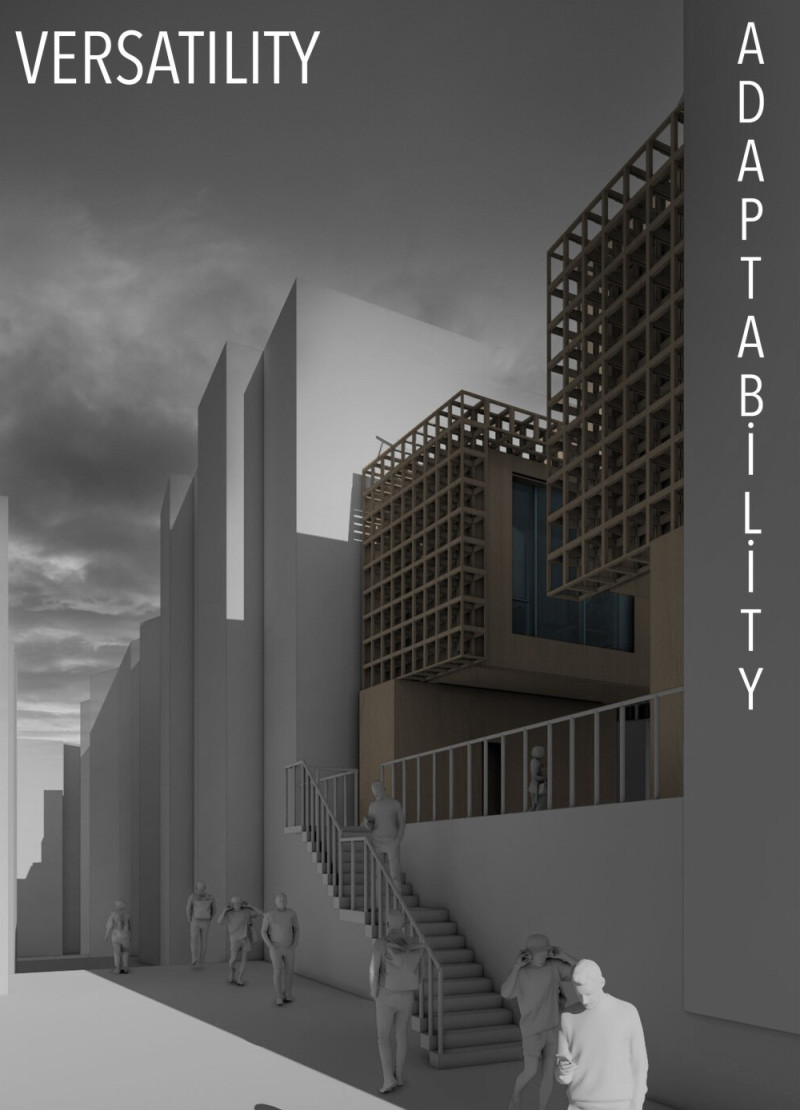5 key facts about this project
Upon entering the project, one immediately notices the open layout that facilitates ease of movement and interaction among occupants. The spatial arrangement encourages social engagement, with common areas designed to accommodate gatherings and activities. The careful distribution of private and communal spaces allows for a balance between privacy and social interaction, essential for a comfortable living experience.
The architectural design employs a variety of materials that not only enhance aesthetics but also address sustainability. Reinforced concrete forms the project's structural backbone, providing durability and strength. Glass plays a crucial role in maintaining transparency and visual continuity between indoor and outdoor spaces, allowing natural light to flood the interiors and creating an inviting atmosphere. The use of Cross-Laminated Timber (CLT) adds warmth and a natural quality, adhering to eco-friendly practices while ensuring structural integrity.
Additionally, the project makes extensive use of steel for structural elements, enabling flexibility in design while maintaining strength. Stone is incorporated into façade treatments, which not only adds to the visual appeal but also ensures the building’s durability against the elements. The inclusion of green roof systems illustrates a commitment to environmental stewardship, promoting biodiversity while contributing to effective stormwater management.
One of the unique aspects of this design is its integration of landscaping with architecture. Terraces, green walls, and outdoor areas seamlessly merge with the building's form, fostering a strong relationship with nature. Native vegetation is selected for landscaping, reducing maintenance needs and further enhancing the ecosystem around the project. This attention to the natural context sets the project apart, as it emphasizes an ecological approach in urban settings.
The innovative design of the building’s façade is another notable feature. Dynamic elements, such as adjustable shading devices, respond to varying sunlight conditions. This thoughtful solution not only enhances energy efficiency but also improves comfort for inhabitants by managing heat gain, thus reducing reliance on mechanical cooling systems.
In terms of architectural ideas, this project exemplifies a trend towards sustainability and user-centered design. By incorporating energy-efficient systems such as solar panels and rainwater harvesting, it represents an emerging standard in modern architecture that prioritizes ecological responsibility alongside aesthetic value. The project speaks to a growing awareness in the architectural community about the importance of designing spaces that contribute positively to their environments, both socially and ecologically.
The result is a space that reflects contemporary architectural sensibilities while remaining deeply rooted in its context. Its thoughtful design elements, material selection, and sustainable practices create a compelling narrative that enhances the quality of life for its users.
For those interested in exploring these architectural concepts further, reviewing the project presentation would provide valuable insights. It is recommended to examine the architectural plans, sections, and the detailed design elements that illustrate how this project harmonizes aesthetics with functionality and sustainability. Engaging with these elements will deepen your understanding of the innovative approaches that define this project.


 Samet Berkcan Yilmaz,
Samet Berkcan Yilmaz, 























